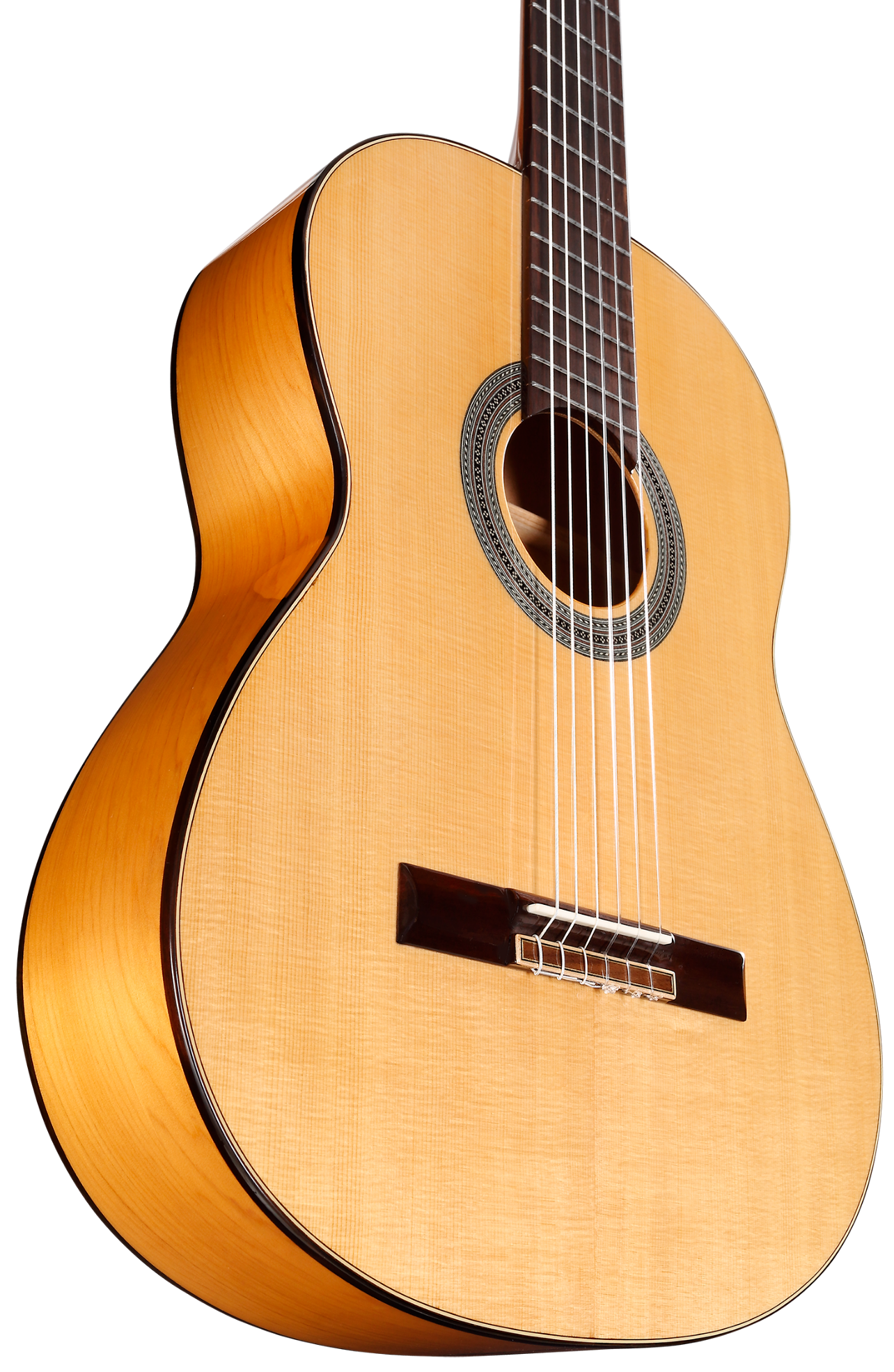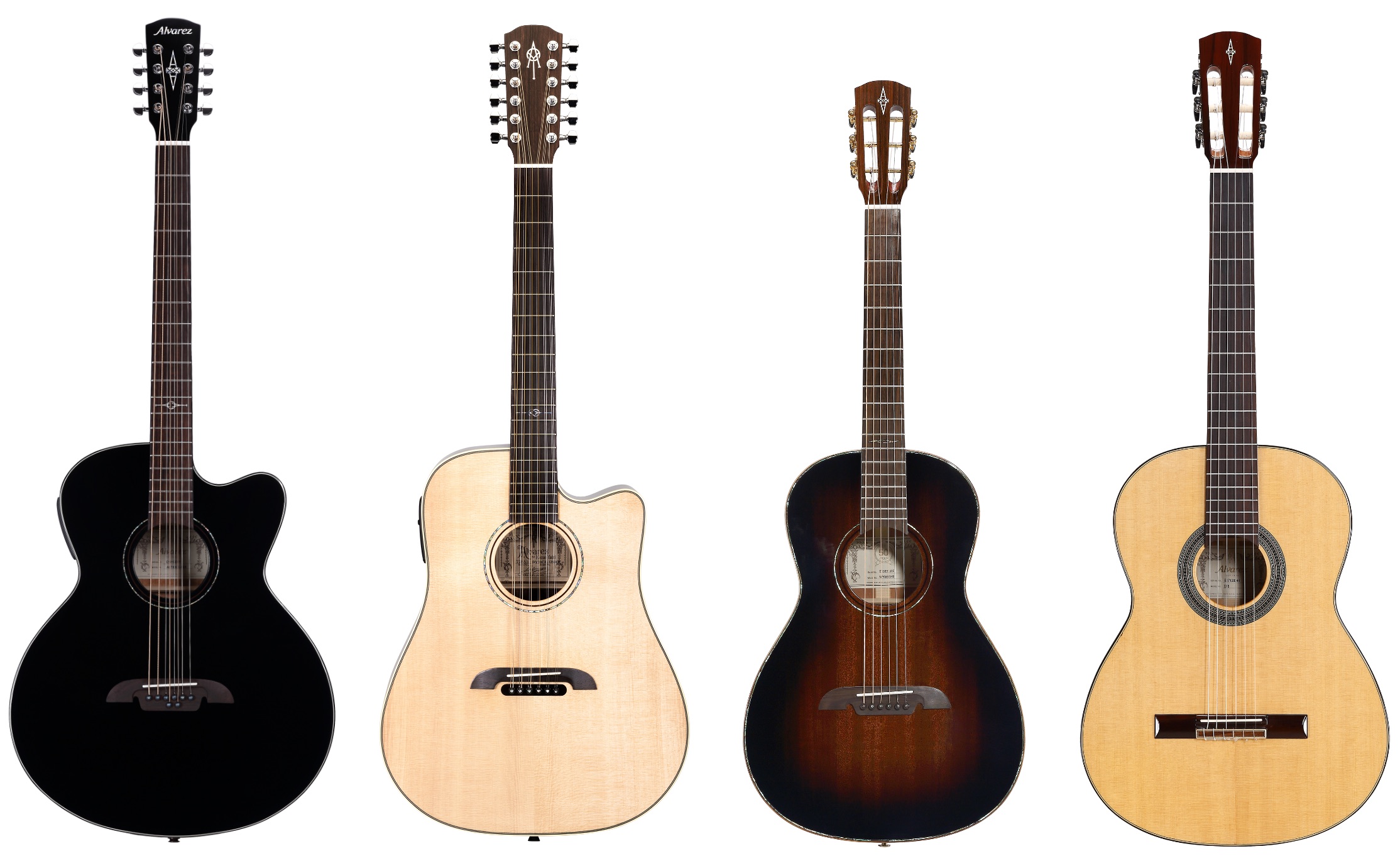Why choose Alvarez?
![]()
With so many brands of guitars in the market today, how do you choose the right one for you?
Which guitar gives you unsurpassed value and quality? Which guitar is the one you keep reaching for?
We believe that guitar is Alvarez.
At Alvarez, we craft instruments with your creativity in mind. We acutely understand that the relationship you have with your instrument directly affects how much you want to play, how you can better develop as a musician, and how the guitar you play impacts how much you play and ignites your creativity.
Making music is one of the most fulfilling gifts in life—but it can also be one of the most frustrating and demanding. Having an instrument that you bond with inspires you. This is the foundation of our approach in creating our instruments.
We also understand we must design for a lifetime. Guitars are not consumable products; they can be kept for decades, being passed on from generation to generation. The way we build guitars must match this tradition. From the choices of woods and components to the accuracy of wood joints and seasoning, every step of our careful approach impacts how our guitars are played, kept, and treasured. This is what drives us, and this directs our design decisions and commitment to thoughtful craftsmanship.

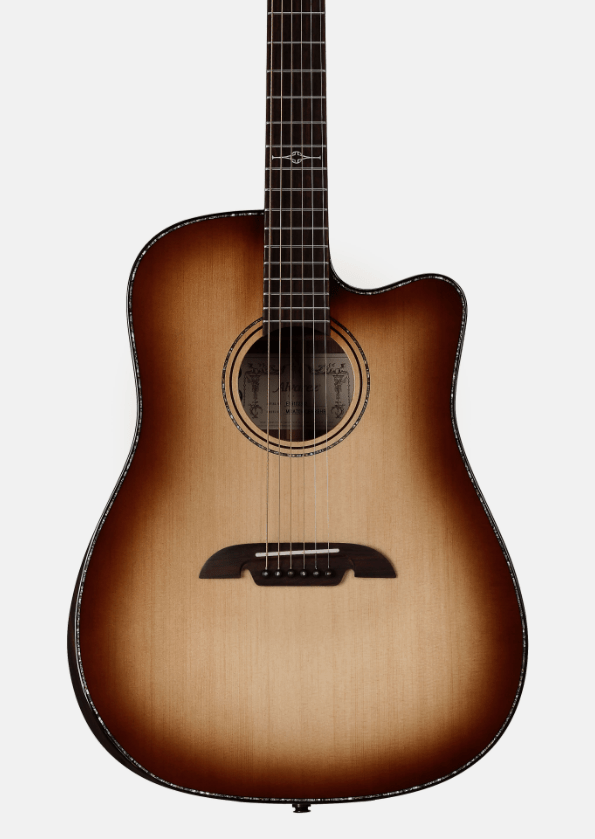
Perpetual R&D
Dedication to quality and value is not always easy. It means we have to make better decisions, gain more knowledge, and keep experimenting and exploring. We call it “perpetual R&D.”
Throughout our development we believe in the decisions we make and also expose decisions that are incorrect, so that musicians playing our guitars never experience any failings. Musicians need to trust their instruments—they are the tools of their trade, they are voices and communication devices and create something that can change the listener’s feelings. Music is a powerful medium best made on dynamic and trustworthy tools.
That is why we obsessively study sanding process, painstakingly test the smallest of components, properly cure our woods, R&D different paints and finish process, invest in tooling and education, and take deep dives into production design as well as product design. For our goal is not just to make great guitars, but to make the greatest value guitars. We incorporate the design and quality we want and you need, which means we have to make them efficiently so as many players as possible can own them.
Only then can we be proud to offer beautiful looking, wonderful sounding instruments that can inspire creativity for a lifetime and bring more music into our lives.
YAIRI
The handmade approach and obsessive R&D.
In a world of mass-produced, fast goods and globalization there seems a growing number of people seeking out handmade products. Items made with a more human approach and the refined skill of Artisans who know their craft and consider the user at every step of production. Alvarez-Yairi is such a product, bench-made guitars, obsessively crafted by a humble and inspiring group of Luthiers who have dedicated their lives to guitar making.
There are 24 Luthiers at Yairi, four of them are Master Luthiers and worked at their benches for up to 55 years. This wealth of expertise helps to set Alvarez apart from many guitar companies. We are known for our endless stockpiles of vintage, and naturally seasoned wood. The Yairi build quality and player experience offer quality rarely found at such accessible price points for bench-made instruments.
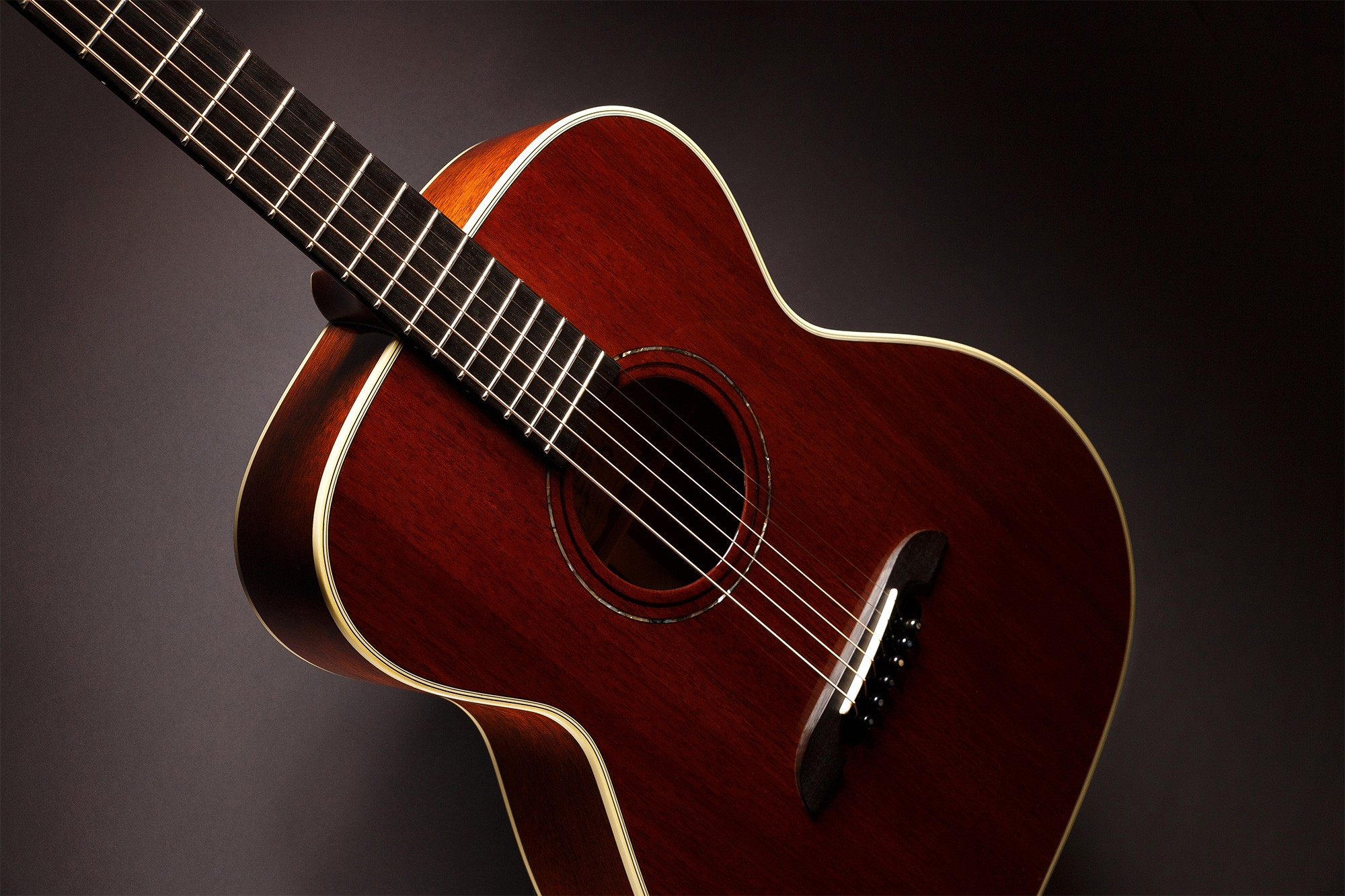
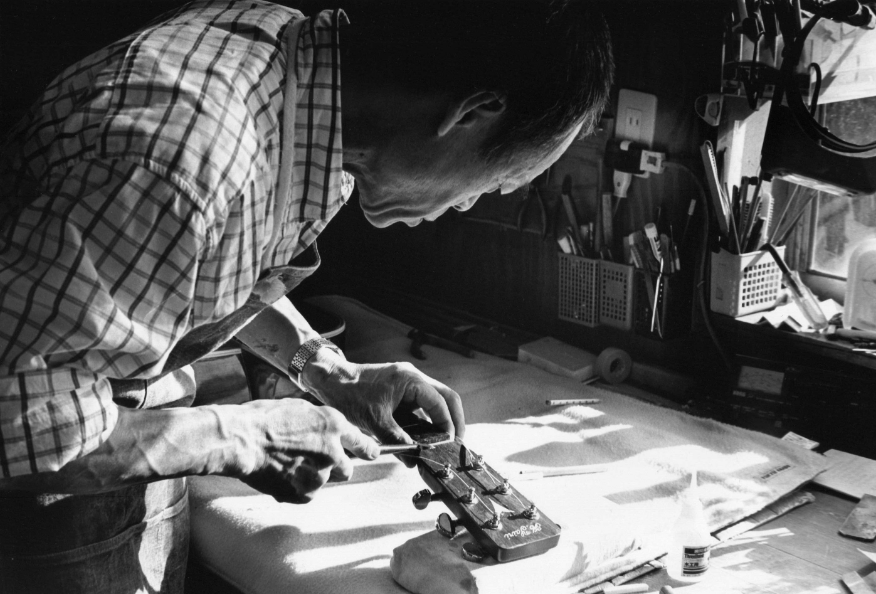
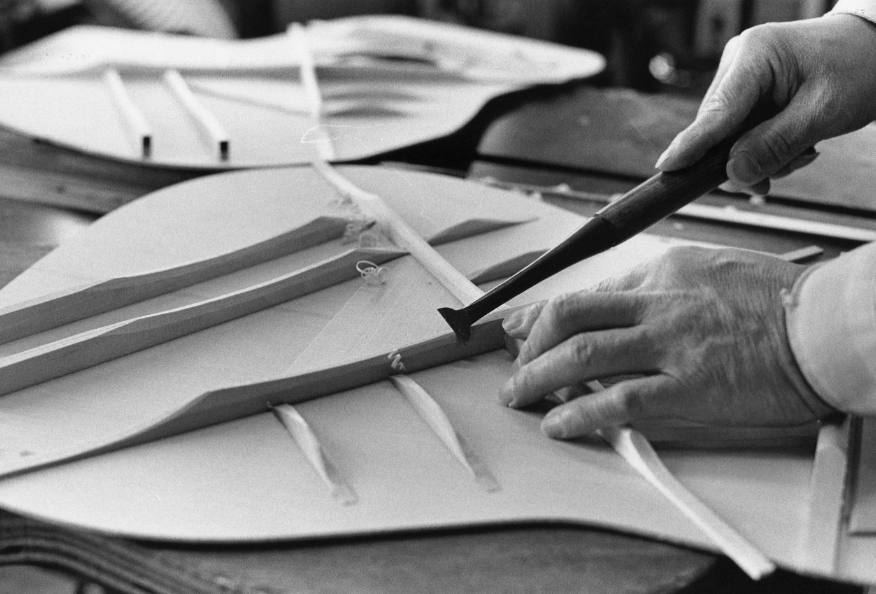
Tone design and bracing architecture
One of Alvarez’s unique selling propositions is genre and model-specific bracing design throughout the entire line. From Yairi to Regent Series, everything is specially designed for purpose and experience.
Our Bluegrass and Blues guitars have pre-war style bracing delivering vintage tone with a more modern dynamic range. Our larger body guitars such as Baritones and Jumbo’s are fitted with our FST2, forward shifted system, and our mid-sized and smaller body guitars are fitted with MST1 which allows those body sizes to generate more energy, resulting in greater projection.
All of our bracing designs have what we call ‘asymmetric tone bars’. This is where the lower braces (tone bars) are scalloped in opposition to each other. One accentuates the middle frequencies, the other the bass and treble which we believe enhances separation and balance across all six strings.
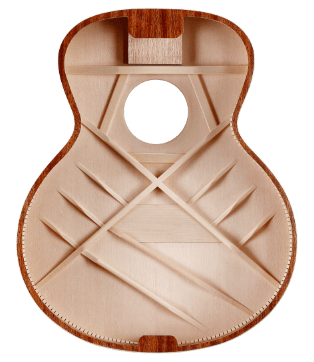
FST2
Forward shifted type 2
Forward-shifted refers to the axis of the X brace being closer to the soundhole than many traditional placements. Placing the X forward creates a larger soundboard area around and behind the bridge, and when coupled with detailed scalloping, generates heightened vibration which can be harnessed and voiced by the tone bars, influencing volume and openness, especially in the bass frequencies.
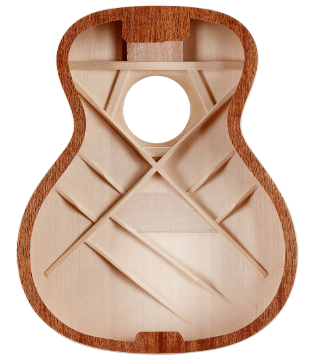
MST1
Middle shifted type 1
We call it ‘Middle Shifted’ because the axis of the X is positioned between our forward placement and some of our other positions for pre-war style bracing patterns. Moving the bracing back allowed us to make the bracing lighter and not tie it into the lining of the top, again to generate desired levels of energy while finding the correct balance between strength and vibration. This bracing design works great for mid-sized bodies and creates a slightly darker, earthier tone to that of FST2.
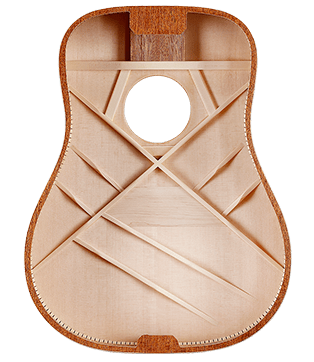
FS6
Forward size 6
Our latest bracing design being introduced across most of our mid-size guitars (except Yairi) is forward shifted with a reduced weight of bracing material. This system really allows the soundbox to sing and brings uniformity across Dreadnought, Grand Auditorium, OM and Parlor body sizes, so the voicing has a similar character, but the individual tone is more purely influenced by the size and shape of the guitar.
Finish
Sanding and painting the Alvarez way
Achieving a truly clear, thin, and deep shine finish requires knowledge and care. When we say “clear,” we’re referring to our gloss clear coat being as free of “inter-coat” scratching as possible. Any guitar maker will attest that this is not easy and requires real attention to detail, especially in the sanding processes to achieve such a high-end finish.
In many standard guitars you will see circular scratching between the coats. This is usually due to aggressive sanding used to sand back each coat of paint before the next. Although using large industrial sanding machines is quicker, it doesn’t achieve a near-perfect finish. That’s why at Alvarez we slow it down, using hand sanders, painstakingly building our finish through every coat with the end result of true “clearness” in mind. Our finish looks amazing, and it is also thin to allow the soundbox to resonate just that little bit more.

